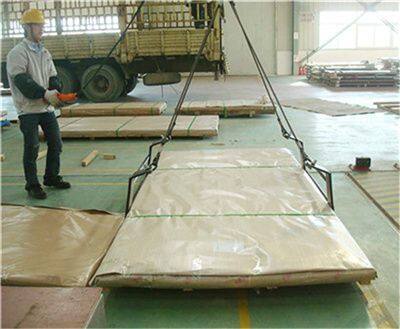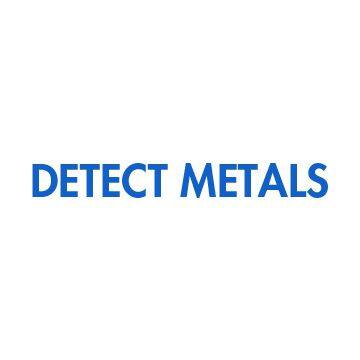Home > Company News > Non-negligible Processing of Stainless Steel Plates
Company News

Pre-weld and post-weld heat treatment cannot be ignored when processing stainless steel plates. The following 304l Stainless Steel Sheet Supplier will introduce to you in detail.
1. Warm up before welding
Pre-weld and post-weld heat treatment is very important for stainless steel plate to ensure welding quality. Welding of important components, welding of alloy steel and welding of thick parts all require preheating before welding. The main effects of preheating before welding are as follows:
1) Preheating can slow down the cooling rate of the stainless steel plate after welding, which is conducive to the escape of diffusible hydrogen in the weld metal and avoid hydrogen-induced cracks. At the same time, the degree of hardening of the weld and the heat-affected zone is reduced, and the crack resistance of the welded joint is improved.
2) Preheating can reduce the welding stress of stainless steel plate. Uniform local or global preheating can reduce the temperature difference (also called temperature gradient) between the workpieces in the welding area. In this way, on the one hand, the welding stress is reduced, and on the other hand, the welding strain rate of the stainless steel plate is reduced, which is helpful to avoid welding cracks. This situation can be effectively avoided when manufacturing stainless steel plates such as 304l Stainless Steel Plate.

304l Stainless Steel Plate
3) Preheating can reduce the restraint of the welded structure of stainless steel plates, and it is particularly obvious to reduce the restraint of the corner joints. As the preheating temperature increases, the incidence of cracks decreases.
The selection of preheating temperature and interlayer temperature is not only related to the chemical composition of steel and welding electrodes, but also to the rigidity of the welding structure, welding method, ambient temperature, etc., which should be determined after comprehensive consideration of these factors. In addition, the uniformity of the preheating temperature in the thickness direction of the steel plate and the uniformity in the weld zone has an important impact on reducing welding stress. The width of the local preheating shall be determined according to the restraint of the workpiece to be welded. Generally, it shall be three times the wall thickness around the weld zone and shall not be less than 150-200 mm. If the preheating is not uniform, the welding stress will not be reduced, but the welding stress will increase.
2. Post-weld heat treatment
The purpose of post-weld heat treatment of stainless steel plates is threefold: to eliminate hydrogen, eliminate welding stress, improve weld structure and comprehensive performance.
The dehydrogenation treatment after welding of stainless steel plate refers to the low-temperature heat treatment performed after the welding is completed and the weld seam has not been cooled below 100 ° C. The general specification is to heat to 200 ~ 350 â and keep it for 2-6 hours. The main effect of the dehydrogenation treatment on stainless steel plates after welding is to accelerate the escape of hydrogen from the weld and the heat affected zone, which is extremely effective in preventing welding cracks during welding of low alloy steel.
During the welding process, due to the non-uniformity of heating and cooling, as well as restraints or additional restraints on the component itself, welding stress always occurs in the component after the welding work is completed. The existence of welding stress in the component will reduce the actual load-bearing capacity of the welded joint area and cause plastic deformation. In severe cases, it will also cause damage to the component.
The stress relief heat treatment is to reduce the yield strength of the welded stainless steel plate at a high temperature to achieve the purpose of relaxing the welding stress. There are two commonly used methods: First, the overall high temperature tempering, that is, the entire welding piece is placed in a heating furnace, slowly heated to a certain temperature, and then held for a period of time, and finally cooled in the air or the furnace. This method can eliminate 80% -90% of welding stress. Another method is local high-temperature tempering, which only heats the weld and its surrounding area, and then slowly cools it down to reduce the peak value of the welding stress, so that the stress distribution is relatively smooth, and the purpose of partially eliminating welding stress is achieved.
After welding of some alloy steel materials, the welded joints will have a hardened structure, which will deteriorate the mechanical properties of the material. In addition, this hardened structure may cause damage to the joint under the effect of welding stress and hydrogen. If after heat treatment, the metallographic structure of the joint is improved, the plasticity and toughness of the welded joint are improved, and the comprehensive mechanical properties of the welded joint are improved.
The above is the processing of stainless steel sheet introduced by the 316 Stainless Steel Sheet supplier.
-
competitive prices for stainless steel plate
-
TISCO stainless steel plate
-
stainless steel dinner plate
-
stainless steel plate
-
304 stainless steel plate in stock
-
410S stainless steel plate in stock
-
And hot rolled yoke steel B350TG179 for hydrogenerator rotor of Baosteel and WISCO.Contact mailboxïŒfwh15827352309@outlook.com
-
M35 / M42 / ASP23 / ASP30 / ASP60 High-Speed Steel â Premium HSS for Cutting, Milling & Precision Tools
-
M35 / M42 / ASP23 / ASP30 / ASP60 High-Speed Steel â Premium HSS for Cutting, Milling & Precision Tools
-
M35 / M42 / ASP23 / ASP30 / ASP60 High-Speed Steel â Premium HSS for Cutting, Milling & Precision Tools
-
High Speed Tool Steel â M35 / M42 / ASP23 / ASP30 / ASP60 | Excellent Wear Resistance & Toughness
-
M2 High Speed Tool Steel â Versatile HSS for Cutting & Forming Tools
-
Cr12MoV Cold Work Tool Steel â High Wear Resistance & Toughness
-
DH2F Cold Work Tool Steel â High Toughness & Wear Resistance
-
HPM50 Plastic Mold Steel â High-Performance Pre-Hardened Tool Steel
-
HPM38 Plastic Mold Steel â Pre-Hardened, High-Performance Tool Steel
-
TDAC Mold Steel â Tough, Reliable, and Ready to Perform
-
TDAC Mold Steel â High Toughness & Pre-Hardened Plastic Mold Steel
-
Premium HPM75 High-Performance Mold Steel â Excellent Wear Resistance & Machinability
-
Premium HPM75 High-Performance Mold Steel â Excellent Wear Resistance & Machinability
-
NAK55 Pre-hardened Plastic Mold Steel â Excellent Machinability & Polishing Performance
-
bimetal compound wear plate chromium hardfacing cladding welding wear plate
-
wearing chromium carbide overlay plate chromium carbide wear surface plate hardfacing liner plate
-
high chromium carbide weld plate chromium carbide welding plate bimetallic chromium carbide coated plate

